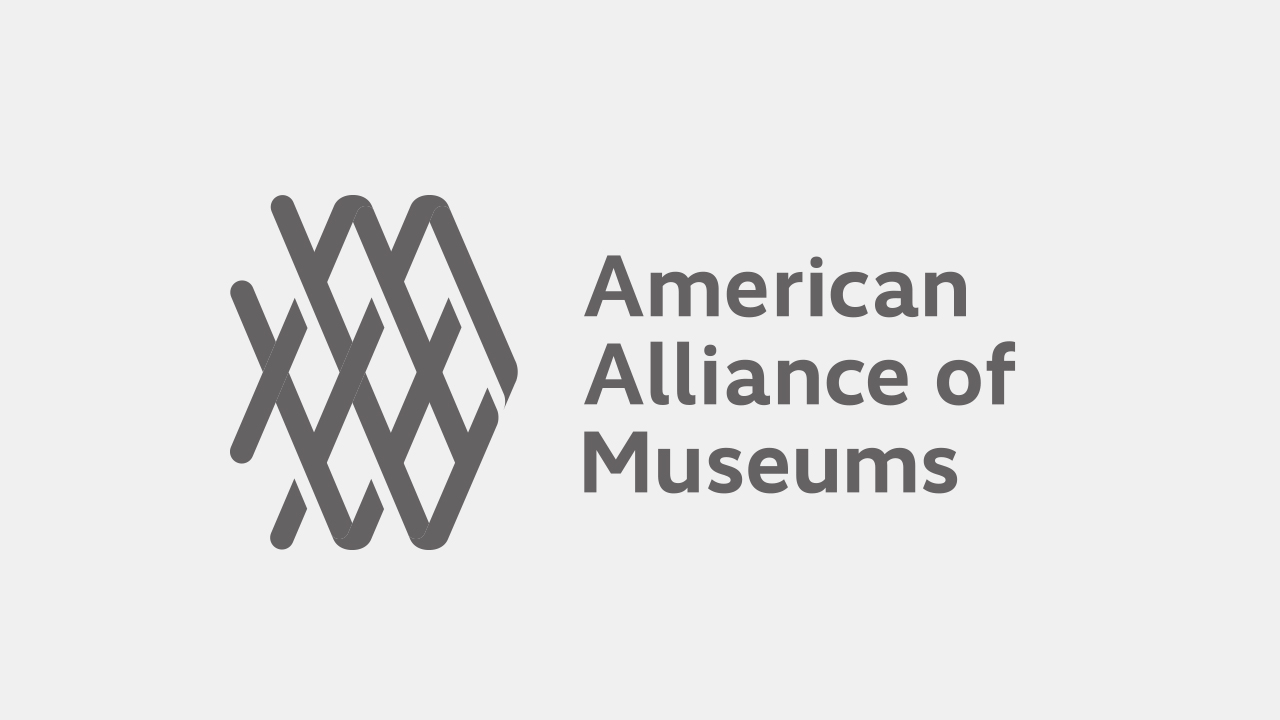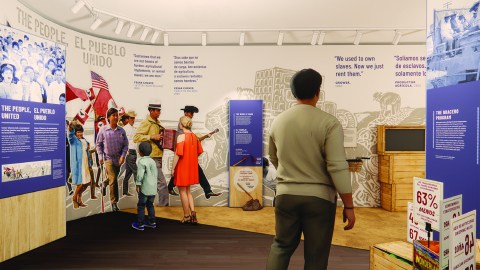
The tips below were shared by Ann Bennett, Allison Schell, Kenny Libben, Susan Goganian, and several audience members during the 60 Ideas in 60 Minutes: Small Museums Are Thriving! session at the 2024 AAM Annual Meeting & MuseumExpo.
Small museums frequently have limited budgets for education programs, but that doesn’t mean they have to shortchange their visitors. Here are twenty scrappy and innovative ideas for inexpensive activities that can energize your traditional programs without breaking the bank.
Repurpose Traditional Games
- Transform a beanbag toss into an educational tool. Museums and other historic sites can use a beanbag toss (also known as cornhole) to tell a story about their history. For example, for an activity related to the American Revolution, divide the boards into two sides (say, British versus American) and modify the game rules based on historical events, such as a battle or bombardment.
- Create a timeline challenge. Make cards with historical events on one side and their dates on the back. Players take turns placing events in a timeline, trying to position them correctly. This is a wonderful way to help visitors engage with your site’s history, especially if you have rotating exhibits.
Revamp Interactive Experiences
- Keep hands-on elements simple and engaging. Interactives do not always need a big budget. A basket filled with dress-up clothes, a knot-tying station, or small, skill-based activities (such as drawing a picture or solving a puzzle) can enhance visitor engagement. Think about what skill or fact you want visitors to learn and then identify a hands-on element that fits your exhibit’s theme that can help them learn that skill. Remember, some interactives should simply be fun and tactile, providing memorable experiences for families and friends rather than being overly educational.
- Combine crafts with social media engagement. Set up a small craft station with a simple instruction sign with a hashtag that invites visitors to share their creations online. This encourages both onsite participation and virtual engagement.
- Incorporate archaeology (even in a simple way!) If your site has any archaeological ties, consider hands-on digging activities. If excavation isn’t feasible, create mess-free archaeology experiences with containers of sand and replica artifacts. Partner with local universities or cultural resource management firms to bring archaeological insights to your audience.
Feature Exhibit Enhancements and Extensions
- Expand exhibits into unexpected spaces. Use small or overlooked spaces like hallways, bathrooms, or even a single display case to extend your storytelling footprint. For example, a museum wrapped its bathroom walls with phobia-related content to align with an exhibit about a psychiatric hospital.
- Rely on DIY exhibit labels and signage. Use craft tools like a Cricut or vinyl label machine to create professional-looking exhibit signage in-house. If you don’t own such a machine, check with local libraries, which often lend these machines for free if you cover the material costs.
- Get creative with visitor polls and voting. Use unique voting methods related to your exhibit themes. For example, a psychiatric hospital museum used tongue depressors as ballots for health-related questions. The more interactive and fun the voting method, the more visitors will engage.
Energize Traditional Programs
- Use food to attract visitors. Historic recipes, themed food events, or unusual dishes generate curiosity and excitement. For example, an exhibit about the World War I home front included a tasting event featuring authentic WWI-era recipes like peanut butter soup and Welsh rarebit.
- Develop hands-on programs. Hands-on programs add an interactive element that keeps people engaged. Some examples include blacksmithing classes, flower pounding & natural dyeing activities or cemetery preservation workshops. You can partner with preservation groups like Atlas Preservation to teach proper headstone cleaning and resetting techniques. It’s a fantastic way to engage the community while preserving history.
- Get back to nature. Native plants programming can be accessible at any site. You can use potted plants or your museum’s own garden—any approach that encourages people to plant native plants. You can even team up with an expert from your community to present natural history tours or themed walking series to explore local history and ecology.
Enliven Events
- Offer Antiques Roadshow-style appraisal events. Invite an appraiser to assess visitors’ objects, creating an interactive and educational experience.
- Screen historic films with a themed twist. Rent a historic theater or screen films in-house, adding fun elements like themed giveaways, costumes, and interactive activities.
- Schedule themed celebrations. Make routine gatherings more engaging by incorporating themes, such as hosting a celebration on Cinco de Mayo, complete with festive drinks and decor.
Revitalize Community Engagement
- Host community collecting days. Encourage residents to contribute photos, stories, or artifacts related to local history. For example, the Baltimore Museum of Industry and Laurel Historical Society hold photo ID nights, in person and online, to crowdsource information about images in their collections.
- Engage with the public online. Post unidentified photos on social media sites to identify people, places, and events and expand museum collections.
- Use Buy Nothing and Donation Networks. Source free or low-cost items like office furniture, tech, or exhibit materials online or via local donation groups.
Establish Partnerships & Collaborations
- Set up trivia nights at local businesses. Team up with restaurants or breweries for history-themed bar trivia nights. This will bring in new audiences to the museum and help the venue attract crowds on slow nights. For example, the Ashland County Historical Society turned a slow night at a local business into the busiest one of the weeks using a museum-hosted trivia event.
- Partner with hotels and developers to create historic displays. Supply historic photos for hotel rooms, parking areas, hallways, or office building lobbies, especially if a historic property once stood on the site.
- Collaborate on joint training initiatives. Pool resources with other museums to reduce staff training costs for specialized skills like audio description or touch tours. For example, the Marshall Steam Museum cut training costs by gathering multiple sites for group sessions.







